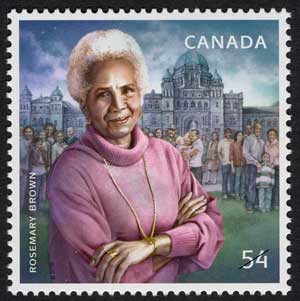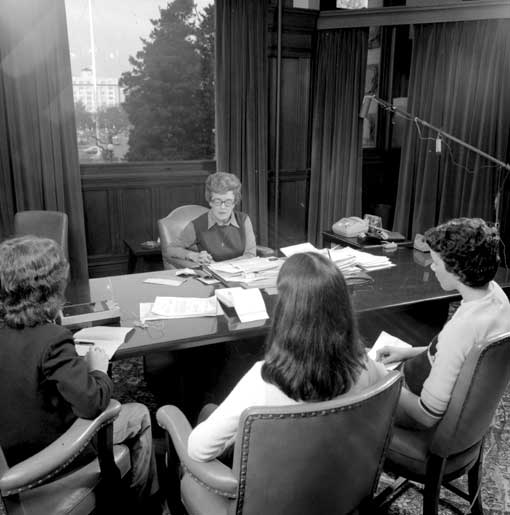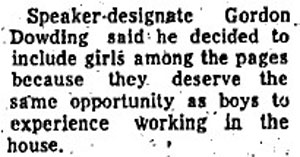Rosemary Brown is the first black woman elected to a provincial legislature in Canada
“Women should enter politics to bring about change. It's a tough arena, and an unpleasant one. The sacrifices called for can only be justified on the grounds that we are indeed making the world or our community a better place than it is.” – Rosemary Brown

Canada Post issued a postage stamp in honour of
Rosemary Brown in February 2009
Eileen Dailly is the first woman to serve as Acting President of the Executive Council

As a result of the provincial general election on August 30, the percentage of women Members of the Legislative Assembly increases to close to 11 per cent (6/55 Members of the Legislative Assembly)
Girls are admitted into the Legislative Page Program for the first time
Excerpt from Vancouver Sun, October 13, 1972
